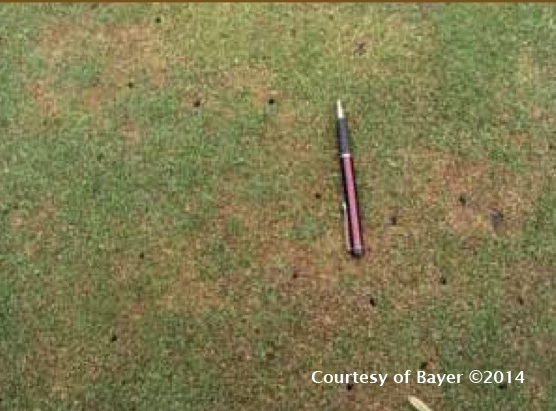Anthracnose
Introduction
‘Colletotrichum graminicola’ is the most common pathogen responsible for causing anthracnose diseases in turf. Often anthracnose is observed as a foliar blight, when turf grass leaves are noticeably infected appearing either yellow with possible red lesions. This disease also has the ability to significantly affect the turf plants crown and roots. Anthracnose affects certain warm and cool season turf species including but not limited to Poa, Festuca, Lolium and cynodon sp.

Interestingly, multiple species of Rhizoctonia tend to complement each other to extend the time of year the pathogen is active and broaden the host range and part of the grass plant that is affected.. As a consequence, there are differences in the effectiveness of chemical control options. Unfortunately, determining which species is causing the problem can be difficult and time consuming. Further complicating matters is the difference in appearance of the disease on closely mown and higher cut turf grasses.
Biology
The causal fungus, survives the winter as dormant resting structures in infected plant debris.
During early spring outbreaks of anthracnose basal rot is common as the fungus, which may have overwintered in the plant, initiates infection at the crown. Outbreaks of anthracnose foliar blight and/or basal rot can occur when spores produce acervuli which are dispersed by splashing water or tracked by mowing equipment from one area to another. These spores then germinate and cause new infections on other plants. Anthracnose is likely to occur when plants are growing slowly (during periods of overly hot or cold temperatures), during overcast periods, and in high humidity.
Conditions favouring disease expression
Climatic conditions that favour the development of anthracnose are average daily temperatures over 25°C, making it a significant problem during spring through to autumn. The disease favours high humidity and hot summers in subtropical to temperate climatic zones and thrives with long hours of leaf and canopy wetness.
Visual symptoms
Primarily the visual symptoms consist of irregularly shaped patches of yellow / bronzing turf, ranging from 20mm to 0.5m with reddish to brown spots appearing on the leaves. Numerous black fruiting bodies can also be seen using a hand lens or microscope on the leaves.
Distribution
Anthracnose is broadly distributed from sub-tropical to sub temperate climates.
Download PDF